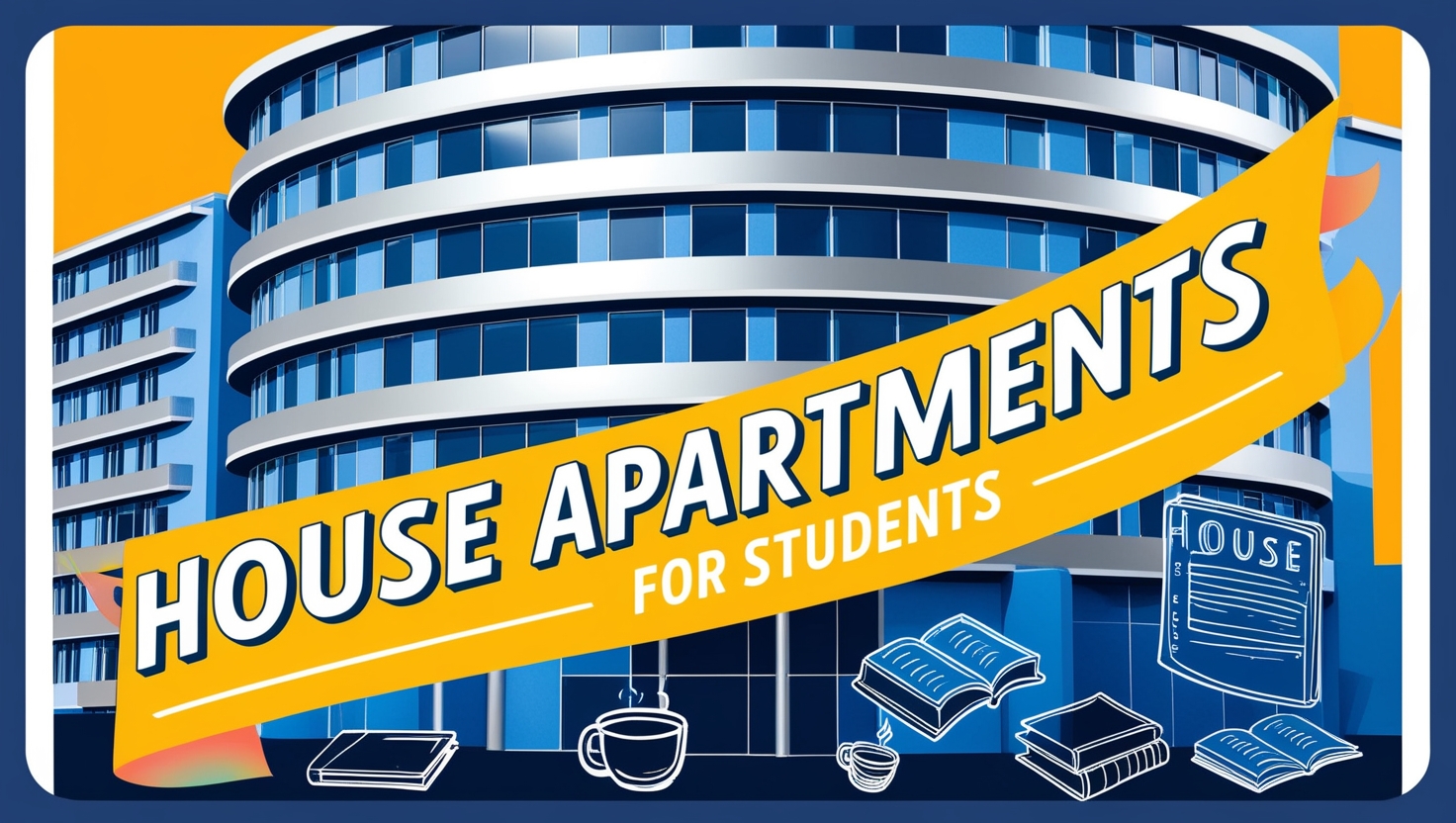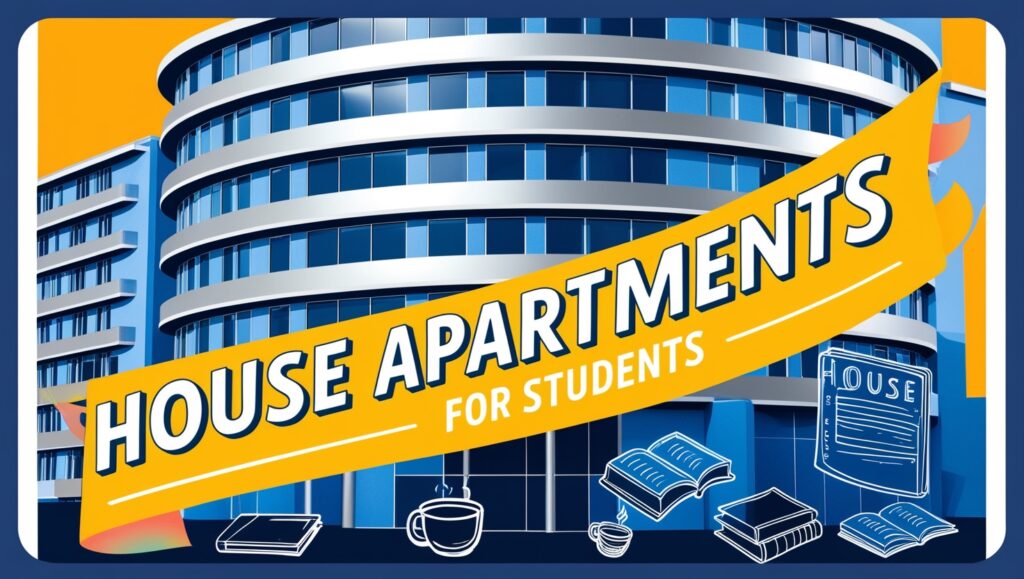
House apprtments for students
Introduction
Finding the right housing is a crucial aspect of the student experience. As students transition to college life, the place they call home significantly impacts their academic performance, social interactions, and overall well-being. In recent years, house apartments have emerged as a popular choice, offering a blend of independence, community, and affordability that traditional dorms often lack. This article explores the nuances of house apartments for students, providing insights on everything from the benefits of communal living to practical tips for finding the ideal space.
1. Understanding House Apartments
1.1 Definition and Features
What Constitutes a House Apartment?
House apartments are typically multi-bedroom units within a larger residential property. Unlike traditional apartments, they often feature shared common areas such as kitchens and living rooms, which foster interaction among residents. These spaces can vary widely in size and layout, accommodating anywhere from a few students to larger groups.
Key Features That Appeal to Students
- Shared Spaces: The communal living aspect allows students to bond and create a supportive environment.
- Affordability: House apartments often provide a more economical option compared to single apartments or dorms.
- Flexibility: Many house apartments offer flexible lease terms, accommodating students’ varying academic schedules.

1.2 Benefits of House Apartments
Community Living and Social Interaction
Living in a house apartment often cultivates a sense of community. Students share experiences, support each other during exams, and celebrate achievements together, creating lasting friendships that extend beyond college years.
Flexibility in Lease Terms
Many house apartments offer month-to-month leases or shorter-term agreements, making them ideal for students who may study abroad or have internships. This flexibility allows for a more adaptable living situation.
Cost-Effectiveness
House apartments often come at a lower price point than traditional dorms. When split among multiple roommates, costs for rent, utilities, and other expenses become significantly more manageable.
2. The Search for House Apartments
2.1 Choosing the Right Location
Proximity to Campus and Essential Amenities
One of the first factors to consider is location. A house apartment close to campus can save commuting time and provide easier access to essential amenities like grocery stores, restaurants, and public transport.
Safety and Neighborhood Vibes
Understanding the neighborhood’s safety is crucial. Students should look for areas with low crime rates and friendly communities that enhance their overall living experience.
2.2 Budget Considerations
Understanding Rental Costs
When budgeting for a house apartment, students need to consider not just rent, but also utilities, internet, and any additional fees. Knowing what’s included in the rental price can help avoid unexpected expenses.
Tips for Creating a Budget
Creating a budget is essential for financial stability. Students should list all sources of income and expected expenses to manage their finances effectively throughout the school year.
2.3 Utilizing Resources and Platforms
Online Platforms and Apps
Numerous online platforms, such as Zillow, Craigslist, and Apartments.com, can aid students in finding house apartments. These sites often include filters for specific needs, helping streamline the search process.
Campus Resources and Bulletin Boards
Many universities have housing offices or bulletin boards where students can find listings for available house apartments. These resources can connect students with landlords directly, often leading to better deals.
3. Features to Look For
3.1 Essential Amenities
Must-Have Features
When searching for a house apartment, students should prioritize essential amenities. A functional kitchen, laundry facilities, and adequate storage are crucial for daily living.
Importance of Common Areas
Common areas are vital for socializing and studying. Students should look for apartments with comfortable living rooms and study spaces that promote collaboration and relaxation.
3.2 Safety and Security

Checking for Security Measures
Safety should always be a top priority. Students should assess security measures like sturdy locks, well-lit areas, and possibly security cameras to ensure a safe living environment.
Understanding Lease Agreements
Understanding lease agreements is crucial to knowing tenant rights and responsibilities. Students should read through the lease carefully, paying attention to clauses that pertain to security deposits, maintenance responsibilities, and lease termination.
3.3 Roommate Compatibility
Importance of Finding Compatible Roommates
Living with roommates can be rewarding, but compatibility is key. Shared values and lifestyles can significantly affect the living experience, making it essential to choose roommates wisely.
Tips for Successful Roommate Arrangements
Communicating openly about expectations, responsibilities, and boundaries can help establish a harmonious living environment. Regular check-ins can address any issues before they escalate.
4. The Application Process
4.1 Preparing Your Application
Necessary Documents
Before applying for a house apartment, students should prepare necessary documents, such as proof of income, references, and identification. Having these ready can speed up the application process.
Crafting a Compelling Application Letter
A well-written application letter can make a positive impression. Students should highlight their reliability as tenants, mentioning any previous rental experience or stable income.
4.2 Understanding Lease Agreements
Key Terms to Know
Understanding lease terms like duration, renewal options, and late fees is crucial. Students should ensure they are comfortable with all conditions before signing.
Red Flags to Watch For
Students should be wary of lease agreements that lack clarity or seem overly restrictive. Unusual fees or ambiguous language can signal potential problems down the road.
4.3 The Walkthrough and Final Decision
What to Look for During a Property Walkthrough
During a walkthrough, students should assess the overall condition of the apartment. This includes checking for damages, ensuring appliances work, and confirming that all promised amenities are present.
Questions to Ask Landlords or Property Managers
Students should prepare questions for landlords or property managers, such as inquiries about maintenance procedures, noise policies, and neighborhood dynamics. This can help clarify any uncertainties.
5. Settling In
5.1 Creating a Comfortable Living Space
Tips for Personalizing Your Apartment
Personalizing a living space can make it feel more like home. Simple touches like artwork, plants, and cozy blankets can create a welcoming atmosphere.
Importance of a Cozy Study Area
A designated study area is vital for productivity. Students should invest in a comfortable chair and good lighting to create a conducive environment for studying.
5.2 Building a Community
Getting to Know Neighbors
Building relationships with neighbors can enhance the living experience. Simple gestures like introducing oneself or hosting a small gathering can foster a sense of community.
Engaging in Community Events
Many neighborhoods host events or activities that encourage interaction. Students should take advantage of these opportunities to meet new people and get involved in their community.
Importance of Setting Ground Rules
Establishing ground rules with roommates can prevent misunderstandings. Discussing chores, guests, and shared expenses can create a smoother living arrangement.
Effective Communication Strategies
Open communication is key to resolving conflicts. Students should feel comfortable discussing any issues that arise, using “I” statements to express their feelings without sounding accusatory.
6. Challenges and Solutions
6.1 Common Challenges of House Living
Noise Issues, Cleanliness, and Shared Responsibilities
Living with others can lead to challenges like noise disturbances or differing cleanliness standards. Understanding that everyone has different habits is important for coexistence.
Dealing with Disagreements Among Roommates
Disagreements are inevitable, but they can be managed effectively. Taking a step back and discussing issues calmly can help prevent conflicts from escalating.
6.2 Finding Solutions
Conflict Resolution Techniques
Students should practice active listening and seek to understand each other’s perspectives. Finding common ground can often lead to effective solutions.
When to Involve Landlords or Property Managers
If issues persist, it may be necessary to involve landlords or property managers. They can offer mediation and ensure that both parties adhere to the lease agreement.
6.3 Moving Out and Transitioning
Tips for a Smooth Transition When Moving Out
As the end of the lease approaches, students should start preparing for the move. Creating a checklist can help ensure that nothing is overlooked.
Importance of Leaving the Apartment in Good Condition
Leaving the apartment in good condition is crucial for getting the security deposit back. Students should clean thoroughly and report any damages before moving out.
Conclusion
House apartments offer students a unique blend of community, affordability, and flexibility that traditional housing options may lack. By understanding the search process, features to look for, and challenges that may arise, students can find the perfect home away from home. Exploring various housing options can lead to enriching experiences that contribute significantly to personal and academic growth.
References
- Online rental platforms: Zillow, Apartments.com, Craigslist
- University housing offices
- Articles on roommate dynamics and shared living tips
This article provides a comprehensive guide to house apartments for students, blending practical advice with a relatable tone. Each section is designed to engage readers and equip them with the tools they need for a successful housing experience.



